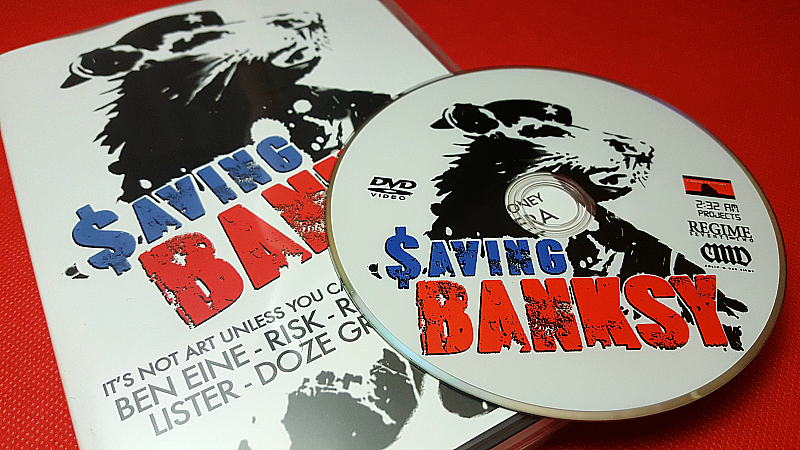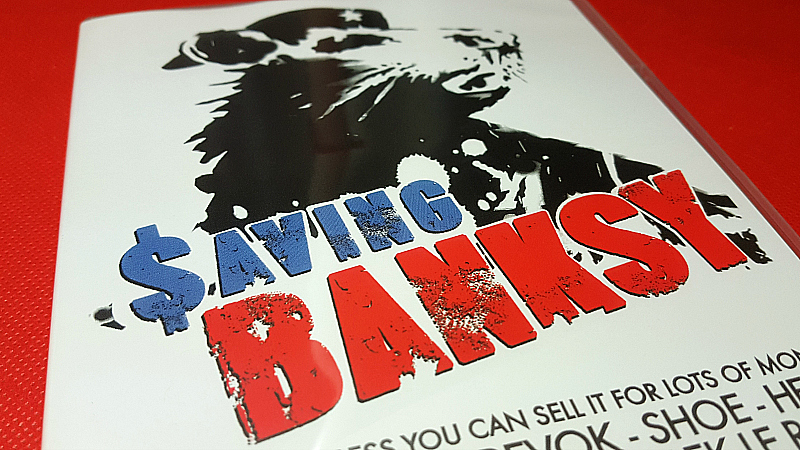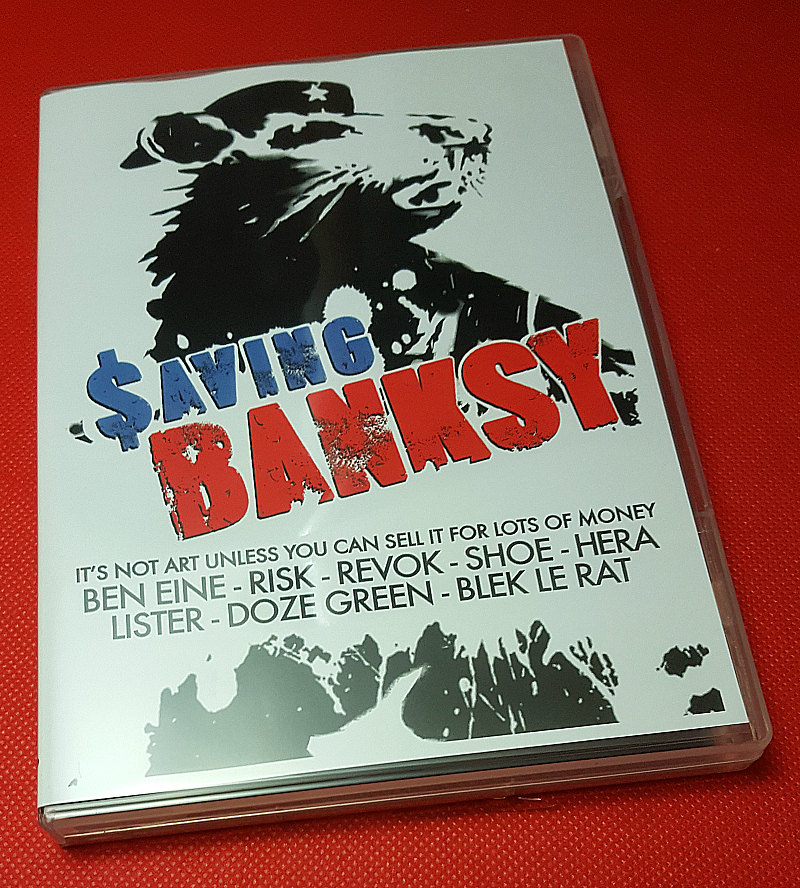It’s not art unless you can sell it for lots of money.
Having you seen Saving Banksy? This movie has been on my ‘want to watch’ list for awhile, so I was happy when a pre-release copy arrived. It was as good as I was hoping and I understand why it received a 100{80aa08cd1591a69daf2c4c354f40b4c82aa989aee5ead2df0fd7028e5eba6bba} certified fresh rating on Rotten Tomatoes.
Saving Banksy is a documentary about the work of acclaimed graffiti artist, Banksy. It opens up broader questions about public art, the meaning of art and the commercialization of art. Before watching the film, I had some thoughts and opinions. Now I have additional opinions along with even more thoughts and questions.
Street art is fascinating, whether it is officially commissioned and approved or vandalism. It will be interesting to see what the future holds for this medium. I look forward to seeing where Banksy’s art will show up next. It’s always interesting to ponder the images, their locations and the deeper meaning in the art. I will look at them anew in light of Saving Banksy.
Saving Banksy
Passion River Films
Not Rated
Release date 5/2/17
Synopsis: “Saving Banksy is the story of one misguided art collectors attempt to save Banksy’s famous “Haight Street Rat” from destruction and the auction block. His efforts to save the Rat are met with threats from city officials, snubs from museums and a flurry of six-figure offers from art dealers eager to cannot to get their hands on the painting. Saving Banksy is a rare backstage look at the elusive world of Street Art and Graffiti. The films narrative is driven by multiple perspectives from Street Artists who paint graffiti illegally, and from art dealers who remove their graffiti from public walls for profiteering purposes. Saving Banksy opens by serving it’s plot up for debate. “What would you do if you found a million dollar Banksy spray-painted on the side of your house?” Since the birth of modern graffiti, Street Artists and graffiti writers have embraced the brevity of their public art. Their public work has always been subject to destruction by property owners, law enforcement, and other graffiti artists. However, with Street Art quickly becoming the hottest commodity on the auction block, these artists are rethinking their public art work in an effort to outsmart the commercialization of graffiti.”



